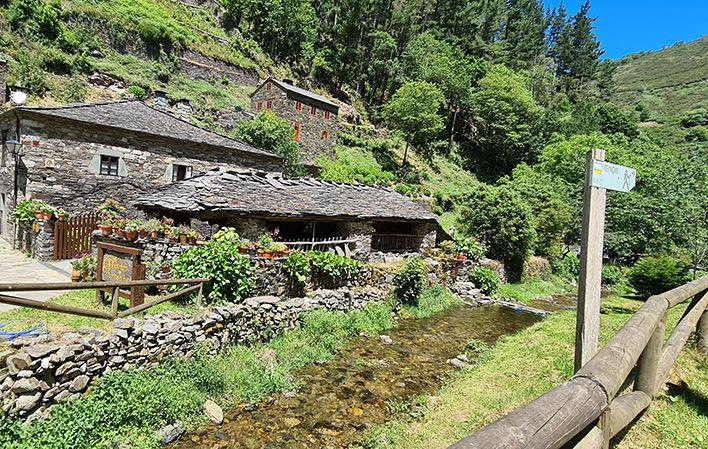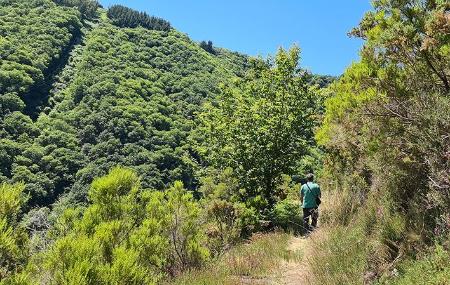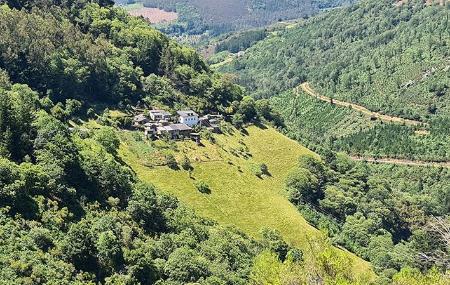
O Teixo - Os Teixóis Route
- Address Taramundi Western Asturias
- Distance Distance: 9,9 kms
- Difficulty Difficulty: Short
- Code Code: PR102.1
- Altitude Altitude: 680 m.
- Unevenness Unevenness: 665 m.
- On foot On foot: 3 h. 35 min.
- Start point Start point: Teixo
- Route type Route type: hiking
- Tour type Tour type: Circular
- Layout of the route Layout of the route: Download kml, Download gpx
Route
O Teixo - O Teixo 9
The route starts in O Teixo (Taramundi), between the peaks of Ouroso and Busnovo. In the vicinity of the hostel you take the road to Santa Mariña. At the last houses of O Teixo we take a track to the right, until we come to a crossroads where we take the left turn-off, which runs under the road. When we reach a 'castañéu', the track turns into a path that crosses it to the village of Santa Mariña, an example of rural architecture in western Asturias, with its characteristic hermetic volumes, masonry walls with exposed stone and slate roof.
From Santa Mariña we continue along the road that goes off to the right and heads towards another example of rural architecture, and from here our path climbs to the top of the crests where we find a track that continues to the left, through an area of heathland and leads us towards the hamlet of Os Armallos.
Here the path turns to the right, descending through meadows and chestnut groves to the road that links Taramundi with As Veigas, and from there along a path to the ethnographic site of Os Teixóis, a perfect example of what in the 18th century was a thriving industry in the whole of Western Asturias. Os Teixóis brings together a whole series of water-powered devices: a mill, the mallet of a forge, a fulling mill for processing wool, whetstones and a primitive power station.
Once we have visited the site, we head towards the nearby village of As Mestas along a path that runs alongside the stream. We ignore the first four crossroads we come to, and then take the next one to the right, which will lead us to a track that we take to the right.
Along the way we will find the still identifiable 'carboeiras' which, fed by the abundant oak trees in the area, produced the charcoal consumed in the once numerous forges. Once in As Mestas we take the track that joins it with O Teixo.




